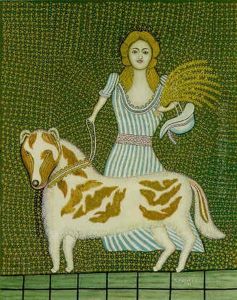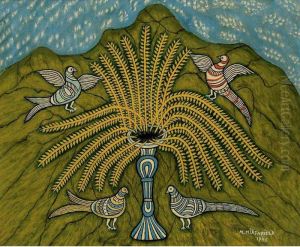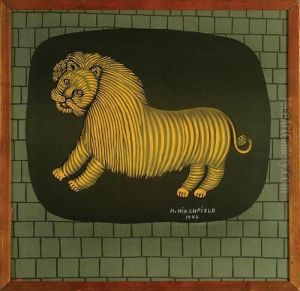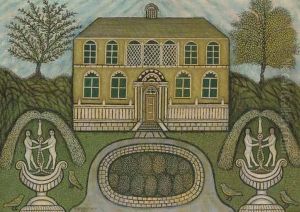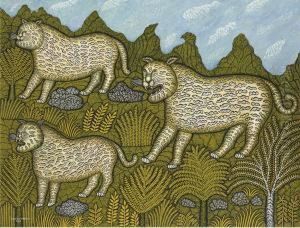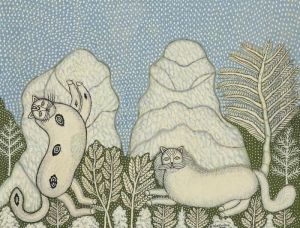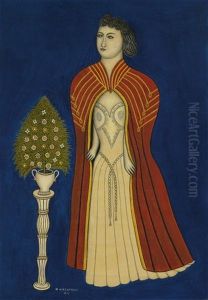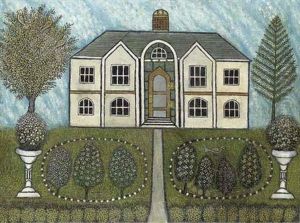Morris Hirshfield Paintings
Morris Hirshfield was a Polish-born American painter known for his distinctive style of naive art. Born in 1872 in Poland, he immigrated to the United States in the late 19th century, where he initially worked in the garment industry. He became a successful tailor and eventually set up his own company manufacturing women's coats and slippers. His career in the fashion industry was successful, but at the age of 65, after a period of illness, he turned to painting as a form of convalescence and self-expression.
Hirshfield had no formal training in the arts and is often categorized as a 'folk' or 'outsider' artist. Despite his lack of traditional artistic education, he developed a unique and recognizable style. His paintings are characterized by their flat, decorative surfaces, use of pattern, and bold contours, often depicting animals, landscapes, and female figures with an idiosyncratic charm. His work has a dreamlike, sometimes surreal quality, with a focus on symmetry and an intuitive approach to subject matter.
Hirshfield's art was met with both fascination and skepticism in the art world. He was discovered by the prominent art dealer Sidney Janis, who included Hirshfield's work in the 1942 exhibition 'The Unknown'. This event marked the beginning of Hirshfield's public career as an artist. In 1943, the Museum of Modern Art in New York held a solo exhibition of his work, which was unprecedented for a self-taught artist at the time. However, the show was controversial, with some critics and artists deriding his work for its lack of technical skill and conventional aesthetics.
Despite the mixed reception, Morris Hirshfield's work continued to garner attention and has since been reevaluated and appreciated for its originality and contribution to the field of outsider art. His paintings are held in various public collections, including the American Folk Art Museum and the Museum of Modern Art in New York. Morris Hirshfield passed away in 1946, but his legacy lives on, offering a testament to the power of intuitive creation and the broad spectrum of artistic expression.
